Keywords: abbreviations
Abbreviation list of works and periodicals
More...Keywords: Mihai Eminescu, Avatarii faraonului Tlà, nominal grup, abstract noun, article
A lot of researchers have studied this structure, so they concluded that the nominal group is a complex structure characterized by the fact that it is an expansion of the name, which is a complex structure which has an identic distribution with the distribution of the name. It is the organized group around of a nominal center includes the name and its determinations. Contrary to traditional linguistic and according to descriptive linguistic, they have been included in the nominal group the determined element and its attributes. The nominal group is a construction organized around of a nominal center and includes the name and its determinations. Abstract noun may be part of the nominal group, with role of center. Nouns named abstract are a subclass of words, which generally opposing to “concrete” nouns. Distinction from the concrete nouns is not absolute, between them exists different types of transfer.
More...Keywords: regional, conservative, novel, derivative, dialectal area
Texts written on the crosses from the Merry Cemetery give us a series of words, interesting as form, as well as semantics, most of these found only in the area of Maramures County. These texts constitute a veritable museum of popular speech in Săpânţa (idiom framed with reserves in the subdialect of Maramures), many of the words or lections of some words being old and even unascertained in other areas of the country. In addition to morphological and lexical aspects, very interesting phonetics aspects are found. Browsing the rich material, offered by texts written on the crosses from the Merry Cemetery, it is noticeable that this dialectal area is distinguished by conservative features. Here, terms inherited from Latin are being found. To these terms, a series of ancient Slovenian origin words are preserved and specific semantics of the sixteenth century are added. Furthermore, the existence of some novel derivatives is remarkable because they offer a special coloring to the speech from the area of Săpânţa.
More...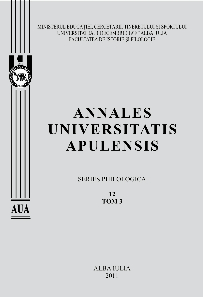
Keywords: stimulation; creativity; students with ADHD; primary school; composition; integration
In this article there are presented the experiences valorized after a study on stimulating the creativity of the primary school students with ADHD through activities of composing. In the last decade there have become visible the Romanian school efforts for adaptation in order to ensure the respect of the right to education for all children and to equalize their chances of success. The integration of the students with ADHD syndrome can be realized successfully if it is adopted by a complex committee made up of special psycho-pedagogues, pedagogues/teachers, doctors, kinetotherapists, who should work in close relation with the family. Hyperactivity and attention deficit are two different characteristics of the syndrome, which are often found simultaneously at the same subject, but can also exist one without the other.
More...
Keywords: creativity; creative thinking; teacher trainees; problem solving
The aim of this paper is to analyse the importance of developing English teacher trainees’ awareness as to the importance of developing students’ creativity as part of the language classes. Creativity involves the communication of experience, a dynamic which can take on various forms and characteristics, although it does not imply a sender/receiver or encoding/decoding model of communication. The act of creation involves grappling with the conventions, traditions, media and institutional conditions through which any experience can be given communicative form. The creative act also entails a will to communicate outwards from self to others, from particular to general, from local to universal. Teacher trainees also need to be educated to think creatively and to be able to solve problems, in order to be able in their turn to bring the element of creativity in their language classes. This paper will provide a background to some previous studies and the field and will present the results of a questionnaire we administered among students in English Language and Literature, who are concurrently studying to become teachers, in order to assess their type of thinking. We will also try to put forward a possible pedagogical model that might be used in order to foster creativity in English teacher trainees.
More...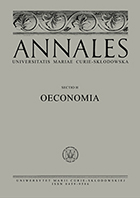
Keywords: loans;small and medium-sized enterprises; risks;credit worthiness;
More...
Keywords: dividend;dividend policy;Warsaw Stock Exchange
More...
Keywords: money;bank;electronic money; monetary policy
More...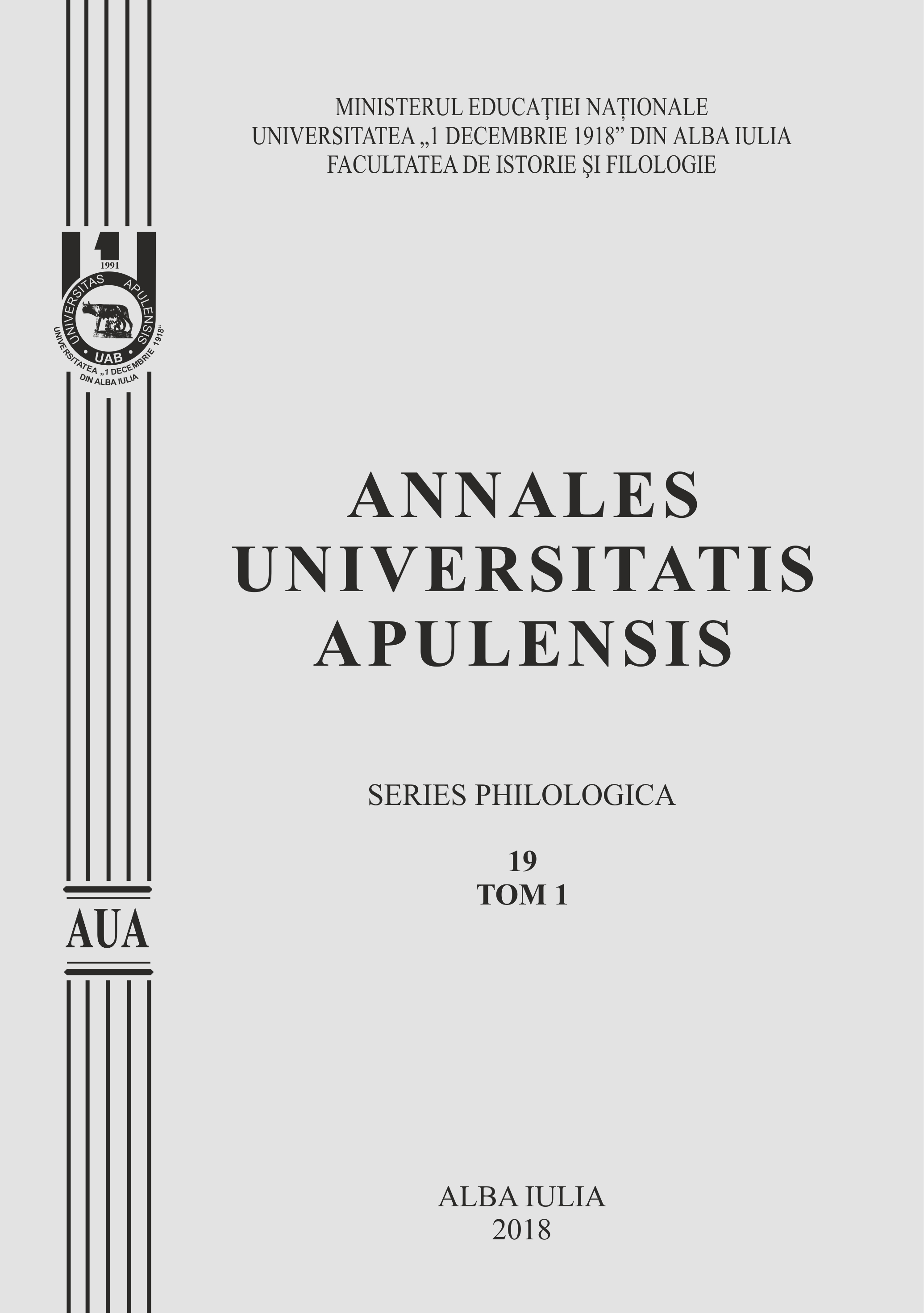
Keywords: Zoe Dumitrescu-Bușulenga; bridge between generations; ideology; moral values; authentic identity; Romanticism; national literature;
Our paper aims at presenting Zoe Dumitrescu-Bușulenga’s rich journalistic activity and, in the same time, applying a novel reading grid to her essays published in the most important Romanian cultural journals of the 20th century: „Secolul XX”, „Scânteia”, „România literară”, „Contemporanul”, „Revista de Istorie și Teorie Literară”, „Luceafărul”, „Tomis”, „Cronica”, „Argeș”, „Ramuri”, „Magazin istoric”, „Steaua”, „Caiete critice”, „Convorbiri literare”, „Viața românească”, „Analele Universității București” etc. Being considered a prominent figure of the last century, truly involved in the Romanian social, cultural and literary climate, Zoe Dumitrescu-Bușulenga was often seen as a literary critic situated between “old” and “new” or caught between two worlds. Therefore, we studied more than 150 articles trying to put in the spotlight her main areas of interest mirrored in the seven directions that we do consider her journalistic activity can be divided. More than simple articles, Zoe Dumitrescu-Bușulenga’s writings bring into attention the imperative need of “human becoming” oriented towards moral values in life.
More...
Keywords: miraculous plants; ritual praxis; profane; sacred; traditional society;
The paper aims to highlight the impact of some miraculous plants upon the Romanian traditional mentality. Sometimes, by the simple presence, some plants have the ability to open any padlock (for example, Iarba fiarelor), other times they have the power to cast out evil creatures, in particular the Pixies, the Ghosts ( for example, Aiul, Avrămeasa, Iarba lui Tatin, Iarba luminii, Leușteanul, Odoleanul, Pelinul, Sita-Ielelor etc.). In the ontological universe of the traditional village, people rely on the empirical thinking. Depending on the ethnographic area of the country, we meet some regional names for one and the same plant. The scientific name of the plant is augmented by the popular name. The plants mentioned are ambivalent: beneficial to humans and animals (apotropaic, therapeutic function) and malefic for certain supernatural beings (Pixies, Ghosts). These plants are under the tutelage of the miracle due to the power they are invested with. Iarba fiarelor is a plant located at the boundary between real and unreal, instead Aiul, Avrămeasa, Iarba lui Tatin, Iarba luminii, Leușteanul, Odoleanul, Pelinul, Sita-Ielelor etc. are real plants that protect humans, animals from evil creatures from other worlds (Pixies, Ghosts). These plants must be picked up on certain feasts at certain moments of the day, and the beings seized by sickness can only be cured in days of sacred connotation. The miraculous plants have a taumaturgical role and become a point of contact between certain binaries: real-unreal, sacred-profane.
More...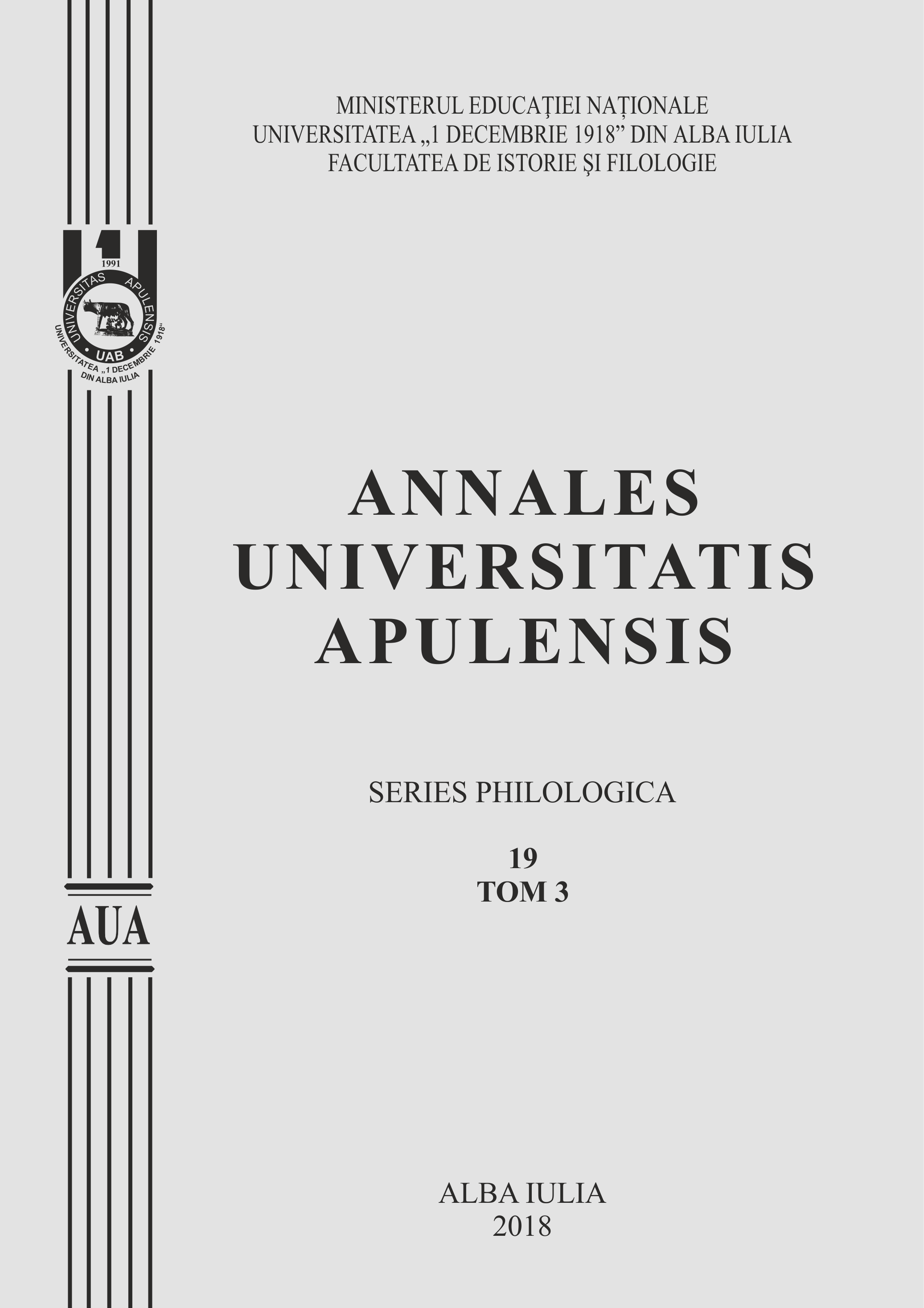
Keywords: rewriting myths; Medea; butô; ekphrasis; femininity; maternity;
Pascal Quignard is one of the most representative “antimodern” contemporary French authors, for his speculative and fictional work gives space and voice to various personalities forgotten by History, and focuses on bygone periods of our civilisation. One of Quignard’s fields of predilection is Greek and Roman Antiquity. The literary work of Christa Wolf, a contemporary German writer, is visibly interested in rewriting classical myths. The rewriting of Medea’s myth is the meeting point with Pascal Quignard’s literary work. The author of this study intends to point out the multiple interpretations of the mythical figure represented by Medea, as they are developed in Quignard’s essayLe sexe et l’effroi (Sex and Terror, 1994) and in the eponymous play, published in 2013, as well as in Christa Wolf’s novel entitled Medea. Stimmen (Medea. Voices, 1996).Firstly, the study of Pascal Quignard’s aforementioned texts will allow us to discuss one important aspect of his literary personality, namely the intersemiotic dialogue established between Letters and Arts, through the analysis of the ekphrastic description of one Pompeian fresco representing Medea and her children moments before the infanticide, as well as the collaboration with the choreographer and butô dancer Carlotta Ikeda for the play Medea.Secondly, we intend to demonstrate that Christa Wolf’s approach of the myth is an oblique strategy of expressing her political and social reflection on the German Democratic Republic, whose struggling citizen she has been for most of her life.
More...
Keywords: exile; diaspora; homeland; identity; spirituality; culture;
The aim of this article is to present different aspects regarding Mircea Eliade′s exilic experience. It is a well-known fact that immediately after the Soviet occupation, the communist regime was established in Romania. Freedom of the press (the power of making yourself heard), freedom of expression (the power of using words to express your own personality and thoughts) and many other freedoms were vehemently denied. This regime intended to destroy Romania′s cultural identity. During the exile, Mircea Eliade edited different publications – his own „weapons” against the communist regime. The cultural manifestations of exile are considered to be, in fact, political manifestations. However, the creative act is autonomous and shows the freedom of the human spirit that proclaims the struggle for culture. Thus, writing becomes a liberating mission, because this way of communication was, on the one hand, a form of anti-communist resistance, on the other, a duty as the exiled were free and safe: Eliade speaks in the name of all those at home, because he subtracts himself from censorship. This way the Romanian culture continued to be connected to universal values. The main purpose of the press was to fight with the political party’s worst aim: to obliterate the Romanian spirituality. Even if Eliade was forced to live outside his motherland, he communicated with people, by means of literature, about what was important to them, so that they could enhance the positive experience of having knowledge about their own identity. Through involvement in cultural activities, Eliade shows that he still belongs to the Romanian spirituality. He thinks that spirituality reflects itself in the cultural manifestations of a nation. The cultural contributions of the exiles are aimed at defining national identity and revealing the traditional values of a country.
More...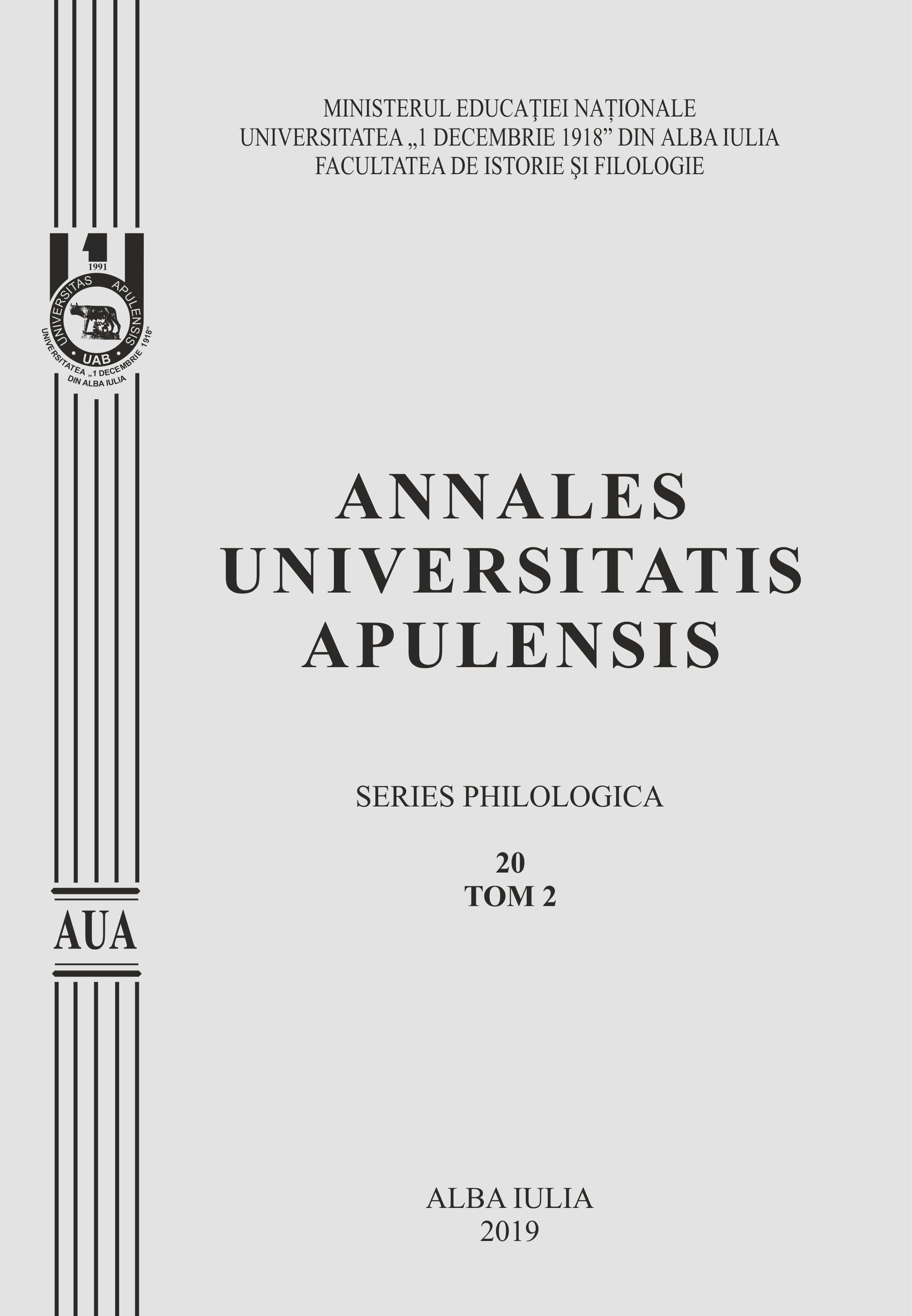
Keywords: feminine literature; Bogdana; Darkness;The City of Wonders; The Teenagers; Eugen Lovinescu; Sburătorul;
Member and even successor of the “Sburătorul” Literary Circle, Ioana Postelnicu managed to overcome the templates set up at that time in terms of feminine writing. She promoted daring topics in Romanian literature such as eroticism and the adolescent passion. With the time, these themes have been turned into periods of the feminine writing maturity. Ioana Postelnicu’s first novel, Bogdana, published in 1939 was considered by her mentor, the critic Eugen Lovinescu as being “a novel of exquisite purity”.Both ,,Bogdana” as well as “Darkness”, her next novel published in 1943, put the reader right in the urban scenery where the destinies of the heroes are designed. Getting into the inner world of her characters, the author gets every time new visions of their insights.The influence of “Sburătorul”literary circle and its head, Eugen Lovinescu played a decisive role in Ioana Postelnicu’s prose.Because the woman was historically and socially anathematized to exclusion and anonymity, she would learn to dare. She also learns how not to accept an amorphous lived life by subduing her desires and how to reject the comfort of resignation with the aim of not ending up in the dark of forgetfulness.By the naturalness of her writings, belonging to the field of native female memorialism, she would prefer to confront the disconcerting history. Her works stand as testimony that challenges of the time were not at all easy, especially for the intelligentsia but what eventually succeeded in the end was “the personalization of the woman” who could be discovered and rediscovered at all her stages of emotional experiences.
More...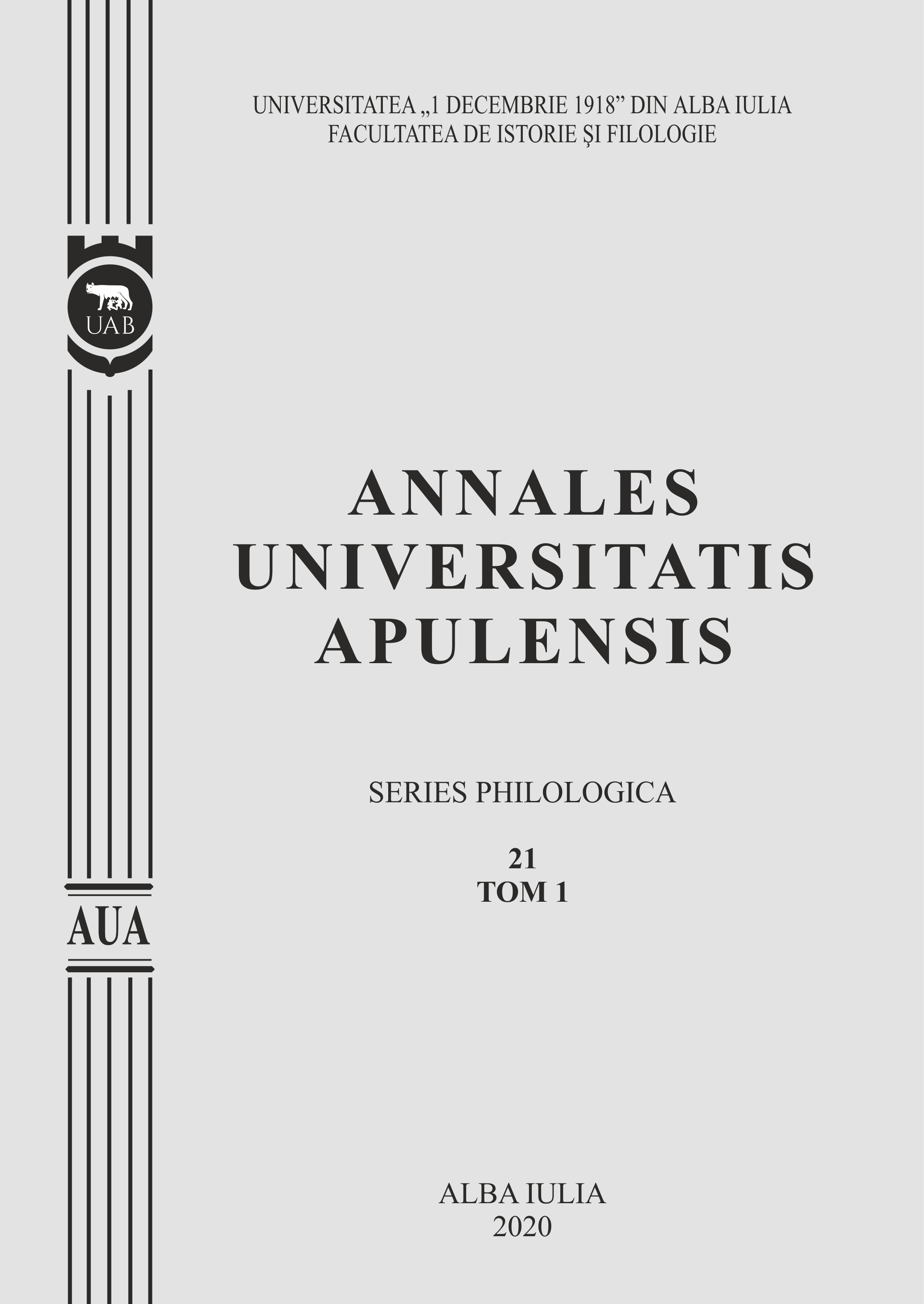
Keywords: pays-maraître; matrie; mythation; nostalgy;
The protagonists of the novels resulting from Maghrebian immigration often wander between a before (emigration, fault, rupture, etc.) and an after (present, consequences, etc.). Those who are most upset by what we call “temporal nomadism” are the parents. They usually live in a “past present” which tears them away from everyday life, from the space they have occupied for a long time already – a “hole” in a fetid suburb, against the current of their matrie, from their lost paradise, imperceptibly transformed into an “imaginary homeland”. For Madame and Monsieur Azouik, Madame and Monsieur Zeldani, Madame and Monsieur Rabhan, and so many others, time stopped the day they left their land of birth for another will turn out to be the land of their annihilation. They all undertook a real work of sanctification of the village; this enterprise, sometimes quite unconscious, often prevented them from living fully the new chapter of their existence: exile. Since their departure for the host country, these «naufragés du natal » (Benslama) will constantly feel the discomfort due to an immense, practically irreparable loss, namely the loss of the family, of an earthly paradise, of the «matrie», of a holy place that tears their soul. Nostalgia, as “refus du deuil” (Dahoun), overwhelms their “ghost life”. Some of them fail to integrate into their new world: on the one hand, the lack of control of the French language condemns them to aphasia; on the other hand, they refuse to bend the rules of life of the host society and continue to live according to ancestral customs. They are not satisfied with their self-isolation in relation to other individuals living in their new “home”; they persist in imposing on their own children – children of “virtue” or “sin” – conduct that follows the same archaic principles. The project of these characters-parents, to which they began to think the day after their arrival in France, is undoubtedly the return to the source and the recovery of the lost order. Unfortunately, this reintegration of the oikos will not be achieved soon. During their stay in the bled, hints of the effects of this myth emerge, but, most often, these protagonists insist on not deciphering them. In our contribution, we propose to see how the characters related to the novels Beur’s story by Ferrudja Kessas (1990), Nuit d’encre pour Farah by Malika Madi (2000), Pieds-Blancs by Houda Rouane (2008) and Un homme, ça ne pleure by Faïza Guène (2014) confront, resist or respond to the disappearance of their homeland, how they fight against forgetfulness that could lead to identity disintegration.
More...
Keywords: Prâslea cel Voinic; golden apples; knowledge; occult; Hermes;
As we have shown in the hermeneutic analyzes of two Romanian folk tales that had in the center the same hero, Țugulea / Țugunea, these folk narratives codified in poetic-symbolic language mythical behaviors, ritual elements, rite sequences, assuming the formative role of a personality. human specimens. This time we will deal with the Romanian folk tale Prâslea cel Voinic and the golden apples, which, as the title of our proposal explicitly suggests, seems to be the literary expression of a hermetic transmutation of a neophyte into an initiate, a parable of seeking and attaining superior occult knowledge.Prâslea's brothers try to unjustly access a higher type of knowledge, but they know nothing about it; they unite worldly with the "silver" and "copper" faces, but they have neither the apple nor the gold face. Only he who descended into Hell holds the secrets of occult knowledge, and that is the little one.
More...
Keywords: Ethnic Identity; American Italian; Autobiographical fiction; Assimilation; Dissimulation; Postmodern;
This article presents some considerations on the theme of ethnic identity of the Italian American Arturo Bandini, the main character of the novel “Ask the Dust”, by John Fante, a writer now regarded as an important figure in the 20th century American literature and a ‘cult author’ internationally perceived for his influence on younger generation of writers. Bandini is widely recognized as Fante’s alter ego, as well as Fante's depiction of the Italian American experience in California during the Depression-era is recognized as part of the U.S. “national drama” of assimilation and ethnicity.Labelled as a highly autobiographical writer, Fante’s novels (of which his masterpiece “Ask the Dust” is the supreme example) are strongly focused on Italian American identity building process, with light on the tensed and conflicting interracial relations and class hierarchies. Earlier literary critics has observed the various aspects of the assimilation and cultural identification dynamic, then they analysed elements of his supposed racist ideology of withe supremacy and prejudice against other ethnic communities (Latinos, Black, Jews, etc.), while more recent contributions have underlined how these elements of racial and class prejudices are, on the contrary, an encouragement to resist racial and class oppression. My border notes aim to reveal the struggled dissimulation strategy of Bandini/Fante’s romantic and humanistic sensitivity, typical then classic of a complex, multidimensional and contradictory character who brings his representation of ethnicity over the modernism and the postmodernism to the post/meta/trans postmodernism, ultimately to our times, making it more vibrant than ever.
More...
Keywords: Mateiu Caragiale; Aubery; Anima; avatar; mesia; imaginar;
The article starts from the premise that the work is not a product external to the author. It cannot be compared to a manufactured object, because the creative process presupposes the total involvement of the soul qualities. Remember can be used as an example of total emulation. Mateiu Caragiale and his avatar, the narrator, can be considered in the context of the work, one and the same person if we approach this relationship from the perspective of a spiritual code of reading. Our approach takes into account the fact that the feelings of a personal spirituality do not have to be invented, as long as they can be easily recognized in the short story whose symbol-generating vector is a “simple” letter. Thus, the book becomes a support for one's own gospel.
More...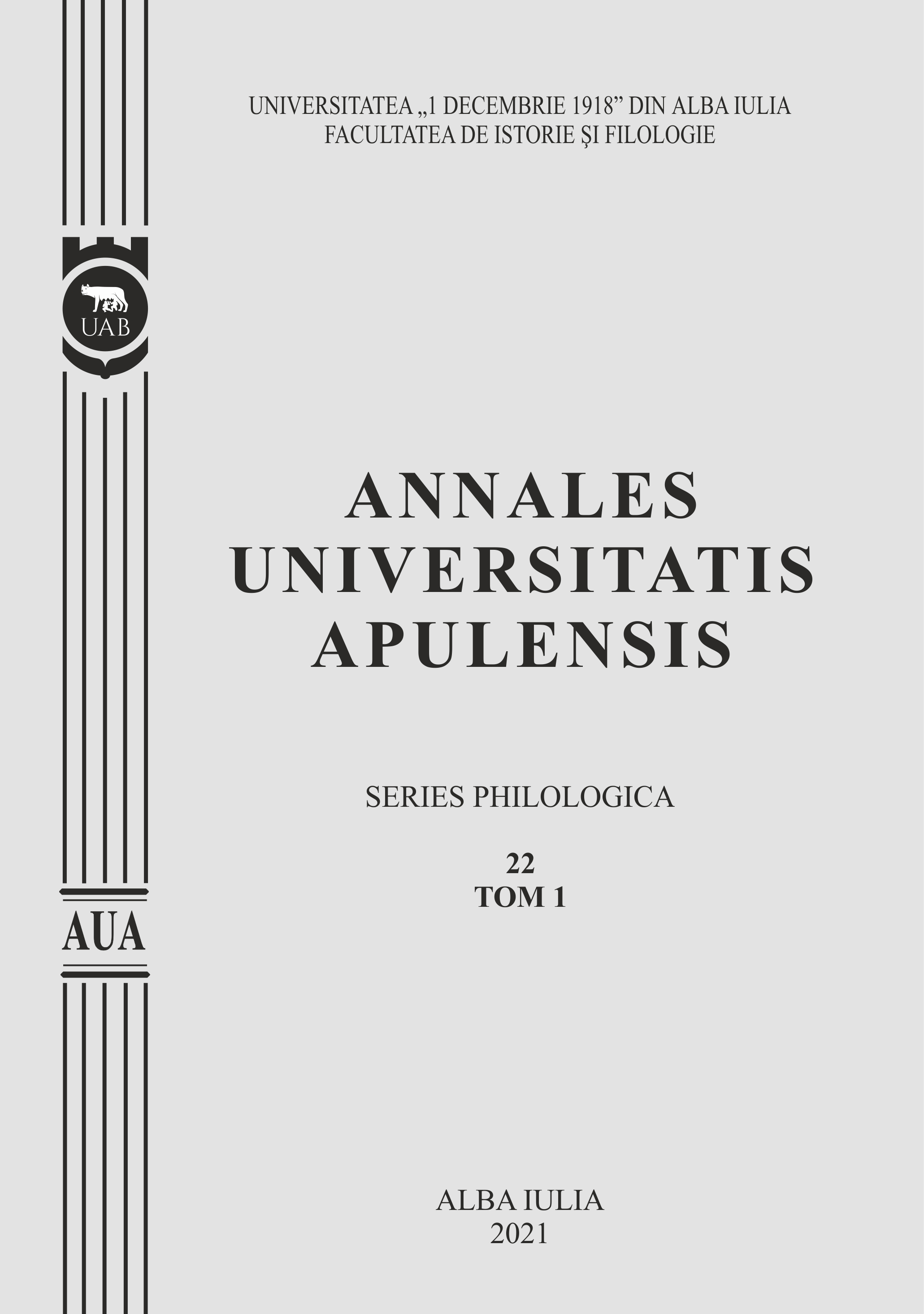
Keywords: Science; religion; fiction; modernism; Huxley;
The extraordinary development of science and technology in the 19th and 20th centuries led to a changed perspective of the position of man in the world and of the beliefs and values that had shaped the western world. History was taking on a new course and along, a different type of society was emerging, but the direction those changes were leading to, was not clear at all. While religious faith was shaken again after the Enlightenment by the development of scientific reason and rationality, some turned in adulation to science as to a new form of religion. Many scholars, scientists and educators were searching for equilibrium, for a balance between the two apparently irreconcilable enemies, as the only way to have a proper, guided development of scientific discoveries and technological advance checked by a continuous emphasis on the moral principles that should govern society first and foremost. That was the general atmosphere in which a series of prominent figures from the worlds of science and letters were formed and were encouraged to express their views on the future of mankind. Aprestigious example in this respect was Aldous Huxley with his novel Brave New World.
More...
Keywords: archetype; topos/tropos; absurd; halucinogene; wonderland;
Our fascination with the theme addressed has deep roots, the sacred and the profane, the esoteric and the exoteric, rites of passage, asceticism, witchcraft, alchemy being only some of the concepts hard to grasp by the human mind, and, precisely for that reason, our mind looks for ways of explaining ’the lack of luck’ in various circumstances, disease, reciprocity in love, the loss of people and objects, either cabalistic or conventional. The intellectual knows other situations, besides his concrete historical conduct, such as the dream state, the reverie or melancholy and detachment or aesthetic delight or evasion, none of them being ”real”, even though all of them are as authentic and important for the human existence as the historical condition. What is more, the individual knows other temporal rhythms not only the contemporary setting. Listening to some good music, uttering a prayer, falling in love, dreaming would be enough to evade the historical present and to re-integrate in the eternal present of religion and love. Space and time are pure forms of human sensibility and not things in themselves or their determinants. Later, Schopenhauer described the same concept as ”the distinction between the phenomenon and the thing-in-itself”, claiming that man perceives this phenomenon simply because things are familiar to him only in the form in which they appear in front of him. The dream and the imagination, the omnipresence of the strange situations, make the artist absorb, at least partially, the ailing of the society and to reflect in the work of art, the mirror of the world. The book deteriorates in the real plane, but it has the great advantage of being saved by the hypertext and the film adaptations with amazing earnings. In literary context, the oneiric becomes the empirical image of the unconscious where the memorized elements and those that are related to visioning, in a prophetic sense, materializing in a depository of all complexes, repressed wishes, suppressed cravings, subversive antisocial tendencies, as the case of the eponymous character, Alice from Alice in Wonderland. The experimental psychology, a relatively new science, does not dispute the idea of the alterity of the human being, thus, it introduces empiricism in the analysis of the subjects. The supra-psychical state results from a quest for the self, from a desire of mind emancipation, the journey being an intellectual victory, through pursuits, discoveries and relinquishment, in every fractal of the wonderland. The current paper intends to analyse the character Alice by using critical instruments from the theory of the imagination.
More...